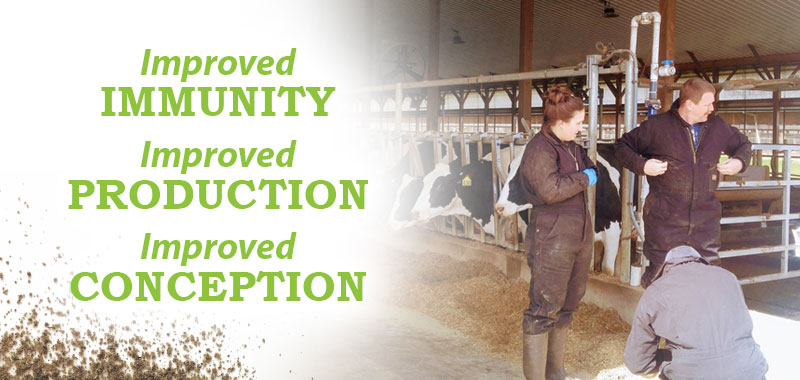Omega-3 Supports Transition Cow Performance
Welcome to O&T Farms Featured Newsletter: The Naturally Better News by O&T Farms

The way in which the transition period is managed will make or break a dairy operation. When done right, transition cow management fosters healthy animals with the capacity to meet their genetic production potential. When done wrong, there can be negative impacts on the cow’s welfare and the sustainability of the entire operation. Of all the management parameters involved, nutritional management plays a critical role for transition cows and new research suggests that linPRO-R could play a big role in achieving success.
Today, fatty acids are playing a larger role in the formulation of transition dairy cow diets. Historically, fatty acid supplementation during this time was viewed merely as a source of dietary energy that could be used to mitigate the effects of negative energy balance in the animal. However, science has now confirmed that individual fatty acids are more than just a source of energy, they are bioactive compounds playing a functional role in animal physiology. These advancements have caused a shift away from dietary “fat” management and towards selection of specific “fatty acids” aimed to support animal health and production during this critical time of the cow’s life.
The potential for omega-3 fatty acid supplementation to mitigate chronic inflammation and support reproduction through transition dairy cow feeding has gained a lot of attention in industry. Inflammation is essential for fighting infection and naturally increases post-calving; however, when left unchecked it can become chronic resulting in an energetic drain on the animal and increased risk of health challenges and reproductive failure 1,2. The omega-3 fatty acid known as alpha-linolenic acid (ALA) has been shown to reduce inflammation3 and also support reproductive function4. Therefore, incorporating a source of ALA omega-3 fatty acids into the transition cow diet may be a useful tool for nutritionists working to balance the immune response of dairy cattle and mitigate risk of inflammatory related challenges on-farm.
Dr. Troy Ott and his team of researchers at Penn State University are evaluating the impact of the commercially available product linPRO-R on transition cow immunology and performance. LinPRO-R is used within the dairy industry and contains a unique fatty acid profile consisting primarily of ALA omega-3 fatty acids. Through a series of both small-scale controlled studies and large-scale commercial studies, Ott aims to determine if feeding linPRO-R could be used to balance inflammation, improve reproduction and optimize milk performance in transition dairy cattle.
Initial trial data reported a down regulation inflammatory responses in post-partum dairy cattle2. This was identified by a reduction in key inflammatory markers such as TNF, IL-6 and IL-10. The data generated in this research confirmed that feeding linPRO-R resulted in an anti-inflammatory response when fed to post-partum Holstein dairy cows.
“Ongoing research at Penn State supports the hypothesis that feeding a diet enriched in omega-3 fatty acids (LinPRO™-R) from calving to 21 days after calving alters immune cell function in transition dairy”- Dr. Troy Ott, Professor of Reproductive Physiology, Penn State University; Associate Director of the Huck Institutes of the Life Sciences
The next stage of the Penn State research took linPRO-R onto commercial dairy operations. Dr. Ott and his team are evaluating different linPRO-R transition cow feeding programs under large-scale commercial setting over the span of an entire production year. Preliminary data suggest feeding the product during the entire transition period could improve reproduction and overall milk production. The team is finishing up their analyses of the data and will present preliminary results at the 2019 American Dairy Science Associations Annual General Meeting (June 23-26; Cincinnati, Ohio) poster sessions (Poster M160).
Fatty acid nutrition has come a long way and allows nutritionists the opportunity to more accurately manage the animal needs and challenges on each farm. Various commercial sources of fatty acids are available and may offer unique opportunities during various stages of dairy cow production. New research indicates that linPRO-R may be the perfect tool for dairy producers seeking to optimize animal health, reproduction and milk production through their transition cow’s diet.
Janna Moats, MSc, PAg
Technical Services Manager







